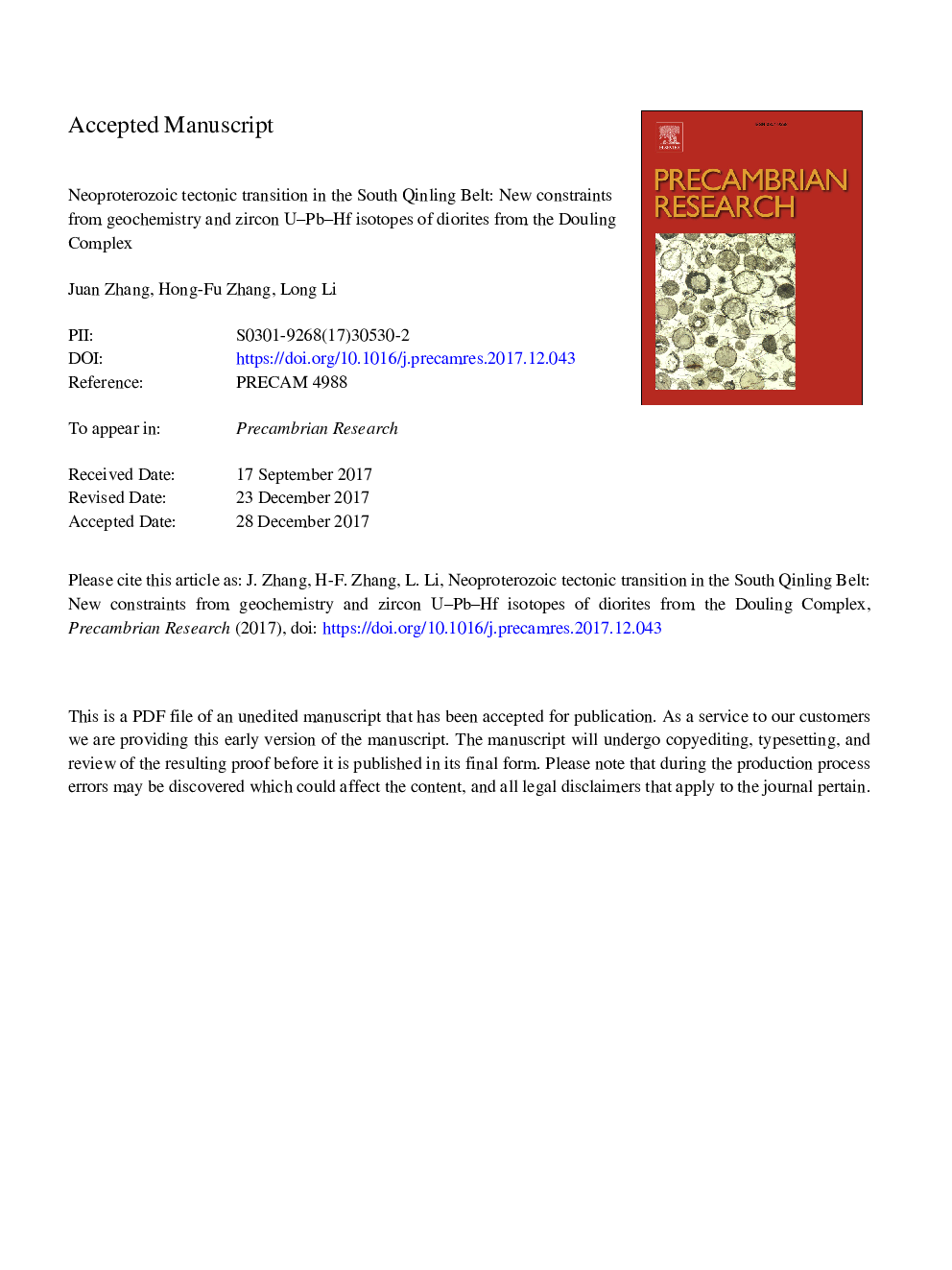| Article ID | Journal | Published Year | Pages | File Type |
|---|---|---|---|---|
| 8912643 | Precambrian Research | 2018 | 72 Pages |
Abstract
The Douling Complex, which represents the oldest rock unit found in the South Qinling Belt (SQB), was intruded by voluminous Neoproterozoic magmatic rocks. These Neoproterozoic magmatic rocks can provide important constraints on the tectonic evolution and crust growth of the SQB, but are still poorly studied. In this contribution, we present geochemical, in-situ zircon U-Pb-Hf isotope and trace element data of Neoproterozoic granodiorite and quartz diorite from three (i.e., Gangou, Sanpinggou and Fenzishan) plutons of the Douling Complex. Zircon U-Pb isotopic dating shows that these granodiorite and quartz diorite have ages in a small range of 693-719â¯Ma and zircon εHf(t) values from â12.3 to 12.6. The granodiorite and quartz diorite samples have intermediate SiO2 (55.05-66.50â¯wt%), K2O (1.23-3.00â¯wt%) and high Mg-number (Mg#â¯=â¯46-67). They display enrichment in large ion lithophile elements (LILEs) and depletion in high-field strength elements (HFSEs), indicating that their mantle source was modified by subducted materials. Our new data, integrated with previous results, indicate that the Neoproterozoic magmatism in the SQB had three major episodes at ca. 630, 750 and 860â¯Ma, respectively. Zircon Hf isotopic data of these rocks reveal that the magmatic sources involved both Meso- to Neoproterozoic juvenile crust and reworked Neoarchean to Paleoproterozoic components. An abrupt increase in the contribution of juvenile crust and depleted mantle relative to old crust occurred in 750 to 630â¯Ma. In combination with the occurrence of synchronous A-type granite in the region, this geochemical shift indicates the tectonic shift from the convergence to divergence in the SQB area.
Keywords
Related Topics
Physical Sciences and Engineering
Earth and Planetary Sciences
Geochemistry and Petrology
Authors
Juan Zhang, Hong-Fu Zhang, Long Li,
